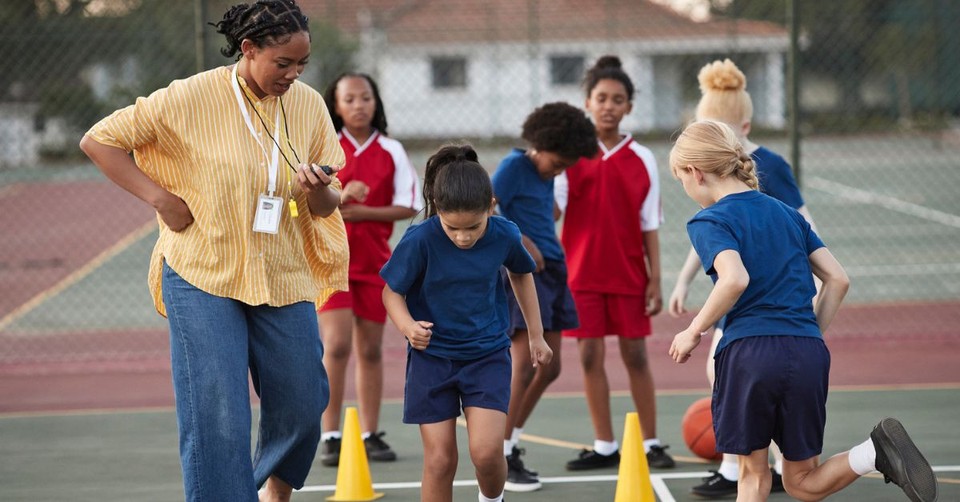What the Presidential Fitness Mandate Misses about Human Flourishing

Last week, President Trump signed an executive order reestablishing the Presidential Fitness Test. Its formal name is the “President’s Council on Sports, Fitness, and Nutrition, and the Reestablishment of the Presidential Fitness Test.”
The executive order connects the purpose for reestablishing the test to the approach of America’s 250th anniversary, as well as noting the urgency to “address the threat to the vitality and longevity of our country posed by America’s declining health and physical fitness. For far too long, the physical and mental health of the American people has been neglected. Rates of obesity, chronic disease, inactivity, and poor nutrition are at crisis levels, particularly among our children.”
Why the Executive Order Was Reestablished
The issue of America’s declining health and physical fitness was addressed by a report released by the Department of Health and Human Services (HHS) and Make America Healthy Again (MAHA) back in February. The report noted that in spite of the fact that America spends more than double on healthcare compared to peer nations, “The health of American children is in crisis,” and that “Today’s children are the sickest generation in American history in terms of chronic disease and these preventable trends continue to worsen each year, posing a threat to our nation’s health, economy, and military readiness.”
Ironically, the same innovation and industrialization that once allowed America to lead the world in food production, business, and energy are the very things that “…also introduced threats to our health and revealed growing inefficiencies in our ability to respond to them.”
The Presidential fitness test isn’t a new idea. It was originally introduced by President Dwight D. Eisenhower when he created the President’s Council on Youth Fitness in 1956. The test was administered in school gym classes at least twice per year and measured strength, agility and flexibility. The activities used to measure these characteristics included running one mine, sit-ups, pull ups, shuttle run and the sit-and-reach, according to Time Magazine.
President Eisenhower was shocked to learn that 58 percent of American children failed at least one component of the test, compared to 8.7 percent of European children who took the same test. Back then, there was great concern about the Cold War, Russian aggression, and military action. So this isn’t a new crisis. It’s just gotten worse.
America’s Children and Their Declining Health and Physical Fitness
Today, Science Direct found that over 40 percent of children 17 years old or younger have at least one chronic health condition, such as asthma, allergies, obesity, autoimmune diseases, or behavioral disorders. The HHS report stated that over 75 percent of American youth who are 24-17 years old are ineligible for military service, mostly because of obesity, poor physical fitness, and/or mental health issues.
In addition, the Journal of the American Medical Association (JAMA) conducted a study on the health of American children between the years 2007 – 2022 and found that, “The health of US children has worsened across a wide range of health indicator domains over the past 17 years. The broad scope of this deterioration highlights the need to identify and address the root causes of this fundamental decline in the nation’s health.”
The HHA report suggests that the reason children’s health is declining is, “… likely being driven by a combination of factors, including the food children are eating, the chemicals they are exposed to, the medications they are taking, and various changes to their lifestyle and behavior, particularly those related to physical activity, sleep and the use of technology.”
Shifting the Focus from Appearance to Character
While there may be some good reasoning behind reestablishing the Presidential Fitness Test, some objections may also be raised. Some of those include the test’s psychological effect on children and the fact that it tends to focus more on athletic ability (thereby giving an advantage to those who are naturally more athletically inclined) rather than helping children to achieve their personal best and make healthy lifestyle choices, according to Time Magazine.
It’s important that children and youth understand that healthy bodies come in all shapes and sizes, and that their appearance doesn’t determine their worth as a person. Focusing on personality and character will help to take some of the focus and pressure off where appearance is concerned.
For Christians, this can be tied into cultivating the fruit of the spirit (Galatians 5:22-23), highlighting acts of kindness, a gentle disposition, patience, goodness, a humble heart, faithfulness, being loving, a joyful heart, and exercising self-control. Other character traits to encourage could be expressing gratitude, being polite and being respectful.
Another way to reduce the emphasis on appearance and focus more on making healthy decisions is to remind kids that a healthy body and making healthy food choices will help them enjoy their hobbies more fully. This focus will also allow them to enjoy their hobbies well into their young adult and senior years.
Photo Credit: ©Getty Images/Klaus Vedfelt

Originally published August 08, 2025.







